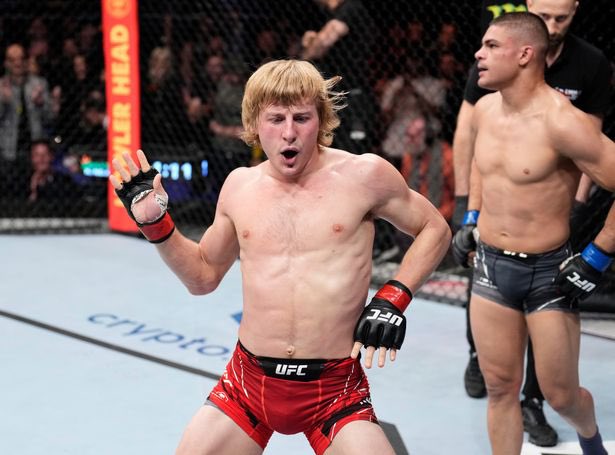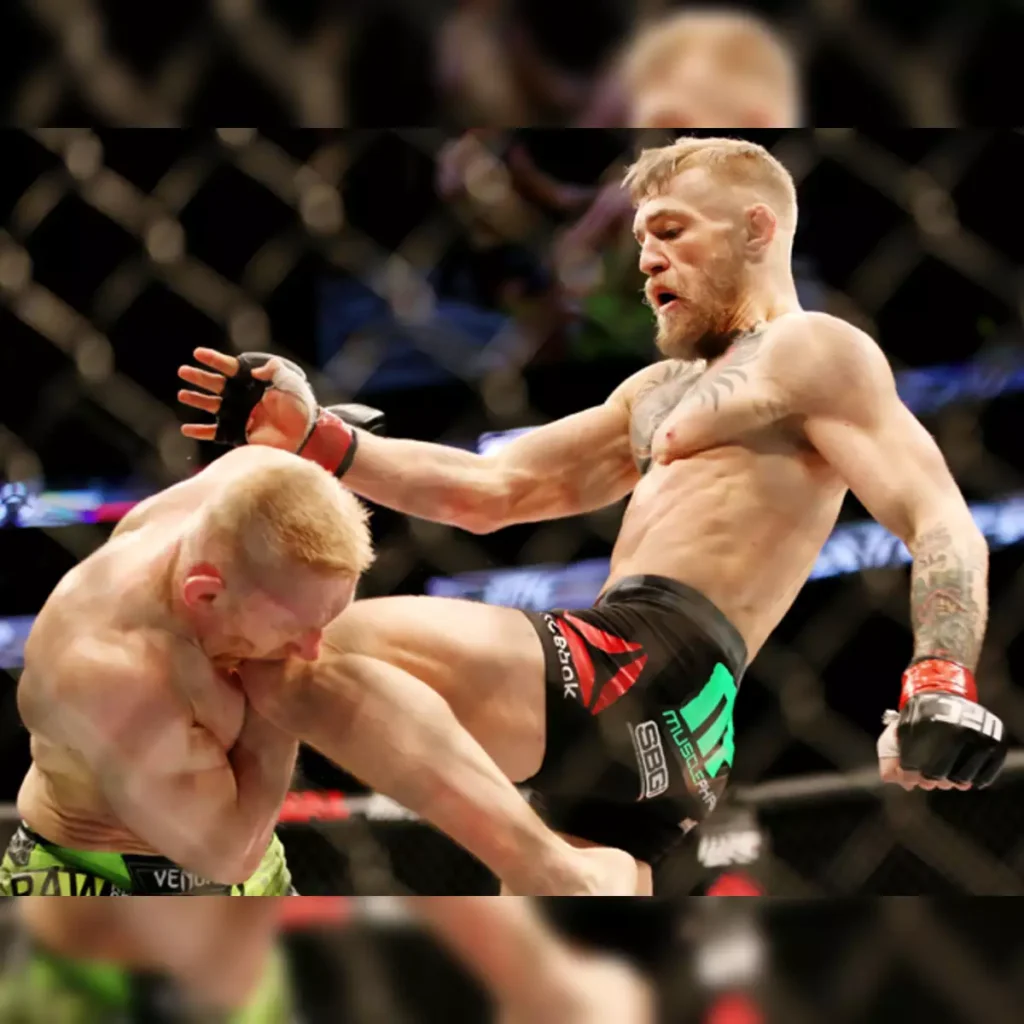When watching a UFC fight, you might hear commentators say a fighter is in a southpaw or orthodox stance. But what does that actually mean? And more importantly, how does it affect a fighter’s performance inside the octagon?
Understanding southpaw vs orthodox isn’t just for hardcore MMA fans. Whether you’re new to the sport or a seasoned bettor, knowing the difference can help you appreciate strategy, footwork, and fight outcomes much more clearly. In this article, we’ll break down the key differences, advantages, challenges, and how fighters use each stance to win fights.
What Do “Southpaw” and “Orthodox” Mean?
In simple terms, orthodox is a stance where a fighter stands with their left foot forward and uses their right hand as their power hand. This is the most common stance, especially among right-handed fighters.
Southpaw is the opposite. Fighters who use this stance place their right foot forward and throw power shots with their left hand. This stance is often used by left-handed fighters, but some right-handed fighters adopt it to create an advantage.
So, southpaw vs orthodox is essentially about stance and handedness, but it goes far beyond that in strategy and execution.
The Orthodox Stance: The Standard in MMA
Orthodox is the default stance in the UFC. Around 80–90% of fighters use it, mostly because most people are right-handed. With the left side forward, fighters can jab quickly and maintain distance, while loading up powerful shots from their rear (right) hand.
Orthodox fighters often build their game around:
- A strong left jab to control range
- Right crosses and overhands for power
- Leg kicks with the rear leg
- Grappling setups from a dominant right side
In the matchup of southpaw vs orthodox, orthodox fighters typically train for mirror matches—fighting against other orthodox opponents. But when they face a southpaw, things get trickier.
The Southpaw Advantage
In southpaw vs orthodox matchups, southpaw fighters have some real advantages. Because most opponents are orthodox, southpaws train regularly against the common stance. Meanwhile, orthodox fighters rarely face southpaws and may struggle with the angles.
Key advantages southpaws enjoy:
- Unfamiliar angles: Their punches and kicks come from directions that orthodox fighters aren’t used to.
- Open stance opportunities: Their power hand is aligned with their opponent’s exposed side.
- Control of the outside foot: Southpaws can dominate positioning by stepping outside the orthodox fighter’s lead foot.
Many UFC legends, like Anderson Silva, Conor McGregor, and Nate Diaz, have used the southpaw stance to deliver unexpected knockouts and confuse opponents.
Foot Positioning: The Battle for Outside Control
In any southpaw vs orthodox fight, footwork becomes one of the most important elements of strategy. The primary goal for both fighters is to gain control of the outside angle. This means each fighter tries to position their lead foot outside their opponent’s lead foot. Although it may seem like a small detail, this positioning plays a major role in how the rest of the fight unfolds.
Controlling the outside angle gives a fighter a clearer and more direct path for landing power shots, especially with their rear hand. It also keeps them off the center line, reducing the risk of walking into the opponent’s strongest punches or kicks. In addition, being in the right position allows smoother combinations and easier exits after engaging. This is why foot placement is so often referred to as a “chess match” in MMA.
Orthodox fighters, who usually face other orthodox fighters in training, often struggle with the changes required when facing a southpaw. Their timing, rhythm, and movement all need to adjust quickly, or they risk falling into poor positioning and opening themselves up to damaging counterstrikes. Southpaw fighters must also stay sharp, but they are generally more accustomed to dealing with orthodox footwork.
This type of stance battle is also something closely watched by oddsmakers and fans alike, especially in regions where fight analytics matter. For example, understanding these strategic differences is key for those involved in UFC Betting in UK, where bettors often factor in stance advantages when predicting fight outcomes. Small details like foot positioning can make a huge difference in both performance and odds.
Southpaw vs Orthodox in UFC History
The UFC has seen countless high-level examples of how the southpaw vs orthodox battle can define the outcome of a fight. One of the most talked-about examples is Conor McGregor’s bout against Eddie Alvarez. McGregor, fighting out of the southpaw stance, used his straight left hand with pinpoint precision to dominate Alvarez, an orthodox fighter, and eventually finish the fight.
Another strong example is Nate Diaz versus Donald Cerrone. Diaz kept Cerrone at bay by using his long southpaw jab and constant forward pressure. Cerrone, usually comfortable fighting orthodox opponents, struggled to find rhythm against Diaz’s angle-heavy approach.
Anderson Silva’s matches with Rich Franklin offer another classic lesson in stance advantage. Silva’s ability to control the clinch and use his southpaw foot positioning completely neutralized Franklin’s offense. Their first meeting ended in a TKO, and the rematch played out almost the same way, again proving how effective a well-used stance can be.
These fights show that knowing how to manage a stance matchup is about much more than raw power. Fighters who understand their stance—and their opponent’s—can dominate by exploiting angles, controlling space, and landing shots that the opponent never sees coming.
Training to Fight the Opposite Stance
When UFC fighters prepare for a southpaw vs orthodox matchup, their entire training plan often changes. Coaches bring in sparring partners specifically chosen to mirror the stance and style of the upcoming opponent. This helps the fighter adapt to unfamiliar angles, timing, and patterns well before stepping into the cage.
Orthodox fighters, in particular, face challenges because they are less likely to encounter southpaw opponents during normal training. They have to adjust their movement to avoid drifting into the southpaw’s power side. Circling away from the left hand, using precise lead kicks, and finding safe openings to jab become critical parts of their preparation. They must also learn how to manage range more carefully since a southpaw’s attack angles are different from what they typically face.
On the other hand, southpaw fighters are usually more comfortable facing orthodox opponents, simply because they do it more often. However, the best southpaws don’t just rely on familiarity—they fine-tune their strategies to make their natural advantages even stronger. By perfecting foot placement, mastering timing, and working combinations that exploit open stances, elite southpaws ensure they stay one step ahead when the octagon door closes.
Is One Stance Better Than the Other?
There’s no clear answer to who wins in southpaw vs orthodox overall. It depends on the fighter’s skill, timing, and how well they use their stance.
Statistically, southpaws have a slightly higher win rate in combat sports, possibly due to the surprise factor and lack of experience most fighters have against them.
However, many champions are orthodox fighters who know how to manage distance, shut down angles, and stay disciplined.
The best UFC fighters, regardless of stance, learn how to switch stances during a fight. Fighters like Max Holloway, Jon Jones, and TJ Dillashaw have used stance switching to confuse opponents and change strategies mid-fight.
Betting and Strategy Insights
If you’re a fan who likes to bet on UFC fights, understanding southpaw vs orthodox can help you make smarter picks. When a strong southpaw faces an orthodox fighter who has a poor record against lefties, that’s a red flag.
You’ll also notice that many southpaws tend to land more straight lefts in open-stance matchups, and orthodox fighters sometimes struggle with timing and range.
Knowing how a fighter has performed historically against the opposite stance can give you insight that goes beyond basic stats.
Why Stance Still Matters in Modern MMA
As MMA continues to evolve, more fighters are training to fight in either stance. Some even develop combinations that work regardless of which foot is forward.
Still, the fundamentals of southpaw vs orthodox haven’t changed. The stance battle is one of the oldest and most important elements of striking, and it remains a key part of every fight at every level.
In an age where fighters are faster and more technical than ever, having a deep understanding of your stance—and your opponent’s—can be the deciding factor between winning and losing.
The debate of southpaw vs orthodox is more than just left-handed versus right-handed. It’s a battle of angles, strategy, muscle memory, and mental preparation. In the UFC, fighters who understand how to fight against the opposite stance have a clear edge.
Whether you’re a casual fan, a dedicated follower, or someone who enjoys UFC betting, learning about fighting stances gives you deeper insight into the sport. Next time you watch a fight, notice which stance each fighter uses—and pay attention to how that changes the rhythm of the match.
Southpaw vs orthodox isn’t just a technical term—it’s a key to understanding the chess match inside the cage.



